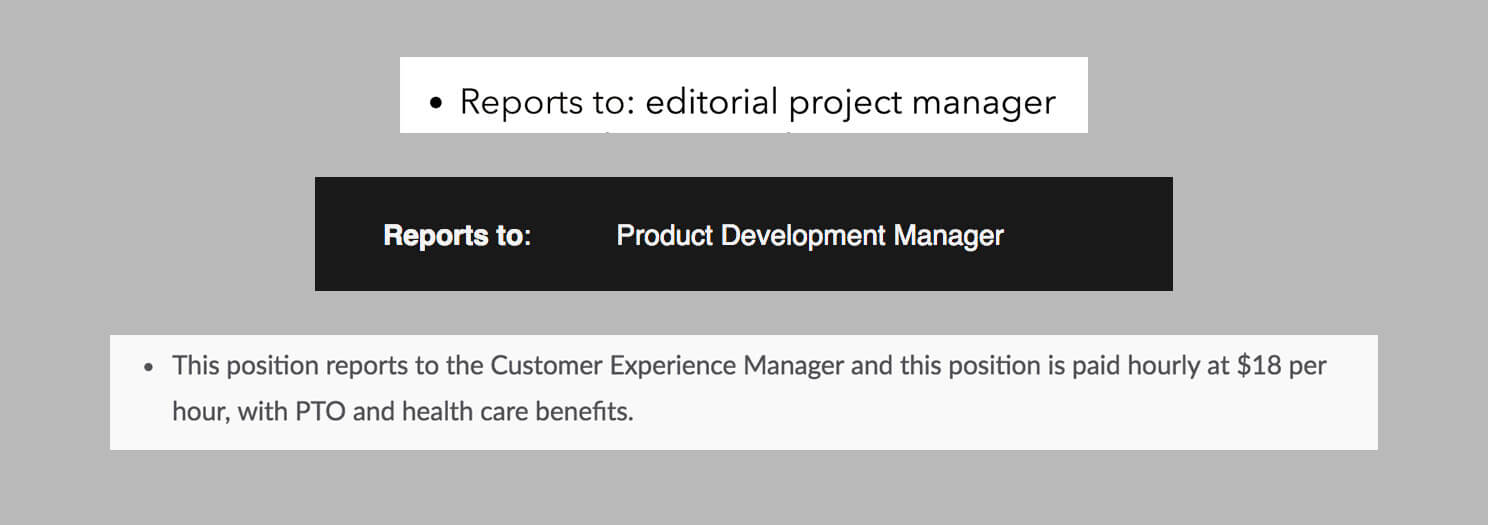After crafting a standout resume and cover letter and hitting the submit button, you might wonder: What now? Do you sit back and wait? Or do you reach out to recruiters?
Knowing how to follow up on a job application is crucial to remaining at the top of recruiters’ minds. While it might seem daunting, don’t let that stop you from making a difference, standing out, and connecting with a potential employer before any other candidate even steps foot into an interview.
In this guide, you will learn expert tips on handling this phase of the job application process, crafting your follow-up email, and staying on top of your job application.
If you are applying to multiple jobs, you need to create a system that lets you see the progress of each application. You can do this by manually building your tracker using Excel or Google Sheets.
You can also use free online tools like Job Tracker. This helps you stay on top of your job search and frees your time up for more important things like preparing for a job interview.
4 steps on how to follow up on your job application
Here’s how you follow up on your job application:
Step 1. Find the right person to contact
The first thing you have to do is figure out who to follow up with. We recommend that you reach out to the recruiter or hiring manager. You can do this in different ways.
- Check your network.
If you have connections at the company, reach out to them. Ask about the company and its culture and if they know much about the role or team you’re interested in. Find out if they can introduce you to the point of contact for the role you applied for. - Check the application.
It’s rare to see an application that lists contact information anymore. Often, a job description will at least list a team or department or even the title that the role reports to.

- Check the website.
Part of thoroughly learning about the company is reading over their website. Use that research to look over staff pages and find appropriate contacts. Narrow it down to one or two people.
- Check LinkedIn.
LinkedIn is a great place for company research. Go to the company’s page and select “see all employees on LinkedIn.” From here, you can also see if you have any connections that already work at the company.
You can also use LinkedIn’s search with the company name and keywords associated with the role, team, or department.
Step 2. Choose the right communication channel
You also need to decide which channel to use to follow up on your job application. You might be tempted to call the company’s front desk and directly ask for the department manager. But in modern times, when most communication is done digitally, and phone calls are often scheduled, out-of-the-blue calls do more harm than good.
Lizbeth Hernandez, a recruiter, finds unscheduled phone calls distracting: “I’d be really caught off guard if anybody reached out to me via phone. I might be working on one thing, so I have to shift gears at a moment’s notice. I’m not in the best state to answer it.”
Determine whether the company specified a communication method and use that. Otherwise, we suggest that you use email, as it is the most professional option. This also allows the recruiter or hiring manager to read it at their own convenience.
Never follow up on a job application in person unannounced. It’s invasive and aggressive, especially early in the application process.
Step 3. Decide when to follow up
Usually, there’s a reason why it can take a little while to hear back from a company. There are a lot of moving pieces in the hiring process, and open roles change quickly.
According to John Ribeiro, founder of Zero2Hired, the timing for your follow-up depends on when and how you submit your job application. Initially, candidates should follow up on the application within 48 to 72 hours.
It is important that you make a quick touch point to express your interest in the role. This is to let recruiters know that you are passionate about the role and would be a good fit.
If you submitted your application through somebody you know, the ideal is to follow up within a week.
If you submitted through a recruiter or hiring manager you don’t know, the ideal follow-up time would be two weeks.
Your goal in doing this is to get your name to the top of the recruiter’s list and be at the top of the mind of the person potentially doing your interview.
Step 4. Write your follow-up email
Crafting a professional and impactful follow-up email is important in your job application process. It shows that you are proactive and interested in the job. It also allows you to connect with the recruiter, position yourself on their radar, stand out, and increase your chances of advancing your candidacy in the hiring process.
Once you follow up on your job application, you must be on top of the entire process, especially when applying to multiple jobs. Our job tracker makes it easy to manage and track your applications. This tool lets you input your interview dates and store your notes in one place.
8 tips on how to write a follow-up email
Reaching out to a potential employer can be intimidating, but it doesn’t have to be complicated. Here are steps on how to write an effective email to follow up on a job application.
1. Start with a strong subject line
Make sure your subject line is short and clear. You should state the purpose of your email so that the recruiter would immediately know you are following up on your application.
- Follow-up on Application: [Your Name] for [Job Title]
- Follow-Up: [Job Title] Application
- Next Steps for [Position Title] Application – [Your Name]
2. Address the recruiter by name
Your greeting will set the tone for your email and build a sense of connection. So, personalize your greeting and address the recruiter or hiring manager by name.
If you don’t have their name, you can say “Dear Hiring Manager.” Just make sure you are polite and professional.
3. Write your introduction
This is an opportunity for you to make a strong impression. In your introduction, briefly reintroduce yourself and mention that you applied for a position in their company. Clearly state the purpose of your email. You can say that you are writing to follow up on the status of your application.
For example, you can say:
I hope this email finds you well. My name is [Your Name], and I recently applied for the [Position Title] at [Company Name]. I’m reaching out to inquire about the status of my application for the [Position Title] and to express my continued interest in the opportunity.
4. Share why you’re interested in the job
The most important thing is to make it clear that you’re excited about the role and that you are interested in and educated about the company.
“I am more interested in candidates who tell me why they are interested in the role rather than a general ‘Please look at my resume and let me know if you have any questions’ communication,” advises Megan Spurr, Senior Group Lead Social Media Manager for Microsoft (Xbox & Social AI) and hiring manager.
Use what you learn about the company’s culture during your research to align your communication tone. Focus on how your skills, accomplishments, certifications, and professional experience position you as the best fit for the role. Additionally, share the value you can add to the company.
5. Politely ask for an update
Politely ask about the status of your job application. You can also ask about the next steps in their hiring process and the timeline for interviews. This shows recruiters that you are proactive and engaged in this job opportunity.
6. Ask if they need further assistance
Ask the recruiter or hiring manager whether they need additional information that might help in the selection process. This includes work samples, portfolios, or job references. You can also let recruiters know that you can address any questions or concerns they may have regarding your application.
7. Wrap up
Thank the recruiter or hiring manager for their time and consideration. Express that you are looking forward to hearing from them. Then, end with a polite remark.
You can say, “Have a great day!” Then, close the email with your full name, phone number, professional email address, and e-signature.
8. Proofread
Before sending your email, review it for any grammatical errors, spelling mistakes, typos, and formatting issues. Also, make sure your email is easy to read and has consistent font styles and sizes.
Go over the facts, dates, and metrics in your email and ensure everything is accurate and truthful. Make sure your tone is polite and professional.
Follow-up email example
Here is an example of a follow-up email for a job seeker who applied for a data analyst position.
Subject line: Follow-up on Application: John Jobscan for Data Analyst Position
Email body:
Dear Mr. Clark Thamson,
I hope this email finds you well. My name is John Jobscan, and I recently applied for the Data Analyst position at Clockwork Analytics. I’m reaching out to inquire about the status of my application and to express my continued interest in this opportunity.
I’m particularly excited about the prospect of joining Clockwork Analytics due to your innovative approach to data analysis and your commitment to driving impactful insights for your clients.
With my strong background in data analysis, including a certification in SQL and extensive experience with data visualization tools such as Tableau, I am confident in my ability to contribute effectively to your team.
I am eager to learn more about the next steps in your hiring process and would appreciate any updates you can provide regarding the status of my application.
If there are any additional materials or information you require from me to support my application, please do not hesitate to let me know.
Thank you for considering my application. I look forward to the possibility of contributing to the success of Clockwork Analytics. Have a great day!
Best regards,
John Jobscan
Phone: 555-1234
Email: john.jobscan@email.com
The example above is effective because the job seeker:
- Included a short and clear subject line.
- Addressed the recruiter by name.
- Started by introducing himself and why he is writing an email.
- Expressed his interest in the job and why he is fit for the role.
- Politely asked for the status of his application.
- Expressed gratitude to the recruiter.
- Ended with a polite remark and his contact details.
- Made sure there were no typos or errors in the email.
How often should you follow up on a job application?
One or two communications, spaced about a week apart, is enough.
Megan Spurr warns, “When I see the same applicant’s name in my inbox, I feel like they might be a little more needy than I am looking in a candidate.”
You might feel too pushy when following up. Remember that it’s okay to follow up on an application submitted online as long as you’re respectful, polite, and considerate throughout the process. Don’t spam your contact or reach out to everyone associated with the company.
Mistakes job seekers make when following up on a job application
Here are some common mistakes job seekers make when following up on their job application:
- Being overly aggressive.
- Not being humble in the request for a follow-up.
- Being impolite in the tone of the email.
- Sending a generic email.
- Sending multiple follow-up emails or phone calls within a short period of time.
- Following up again too soon after sending the initial follow-up email.
- Telling the recruiter that they are the “ideal.”
- Saying they can already start the job the following day.
- Writing an email that’s too casual and unprofessional.
- Failing to proofread the email.
- Forgetting to include their name and contact information.
- Exaggerating and lying.
- Not responding promptly when the recruiter replies.
Ribeiro said that the purpose of a follow-up is “really just to express interest to let people know that you’re a good fit for the role, but do it in a way that sounds humble.”
Take parts of the conversation that you’ve had with the hiring manager and the recruiter and incorporate that into the language of your follow-up message.
Ideally, if you could share a piece of value through the follow-up, you’re going to resonate more with the hiring manager and the recruiting team.
Use Jobscan’s Job tool to find your next dream role
Finding the best jobs to apply for can have you bouncing from website to website—LinkedIn, Glassdoor, Indeed, ZipRecruiter, and more. But Jobscan offers Jobs, a curated collection of job openings on your Jobscan dashboard.
Input a job title, keywords, or location to find the best jobs for your skillset. When you find a job that stands out, you can click and go right to our premium tool, Power Edit, to begin optimizing your resume to the job description.

Stay on top of your job application
Organizing your job applications, interview schedules, and job search notes can be tricky, especially when applying for multiple jobs.
You have to create a system where you can check which applications to follow up on, determine the recruiter to reach out to, and remember important information related to the specific job.
You can build your own Excel sheet to track all of these. Just make sure you regularly check your file and sort data so that you can easily retrieve whatever you need.
You may also use online tools such as Jobscan’s job tracker. It is simple to use and is 100% free.
Here’s what the tracker looks like:

You can just drag any job opportunity and put it under the different boards depending on which stage of the hiring process you are in.
You can also click on each job card to keep track of interview schedules, meeting links, contact details, important notes, pending tasks, and other job information.
With the tool, you can easily retrieve the resume you submitted for the specific job. You can also easily scan your resume to see how well it matches the job description. Doing this will increase your chances of getting interviews and landing your dream job.
For an even easier and more efficient system, you can also download the Job Tracker Chrome extension and easily save any job listing you are interested in.
Here’s a video tutorial on how to do that:
Key takeaways
Here are important things to note when following up on your job application:
- Research the company and determine the right person you need to contact.
- Follow up about a week after your original application. If you don’t hear back, follow up a week later.
- Follow up on your application with a friendly and polite email.
- Make a good impression by being informed about the company, connecting your experience to the job’s needs, and providing a demonstration of your skills.
- Make sure your email is free of grammatical errors and typos.
- If the recruiter responds to your follow-up email, make sure to reply promptly.
Frequently asked questions
Here are some steps on how to follow up after applying for a job:
1. Wait one to two weeks after applying.
2. Find the recruiter’s contact information and research about the company culture.
3. Write a short follow-up email.
4. Ask for your application status.
5. Be polite and professional in your follow-up.
6. Mention your name and the position you applied for.
7. Check for typos and grammatical errors before sending.
8. Say thank you to the recruiter.
It is generally acceptable that you follow up on your job application twice.
If you get an invitation for an interview after following up, here’s what you should do:
1. Respond promptly.
2. Thank the recruiter or hiring manager and confirm your attendance.
3. Ask for interview details like the date, time, and place.
4. Research the company and practice answering common interview questions.
5. Ask for any additional information they need and if there are any tasks they need you to do before the interview.
6. Go over your resume and cover letter and take note of details.
7. Prepare for the interview.
8. After your interview, plan to follow up.
You can also check more of our job interview tips and increase your chances of getting hired.
If you receive a rejection after following up on your job application, here are things you can do:
1. Thank them for letting you know.
2. Politely ask if they can give you feedback on your application.
3. You can also ask if they can give any advice.
4. Let the recruiter know that you are still interested in the company and future job opportunities.
5. Ask if you can connect with the recruiter through LinkedIn.
6. Don’t get discouraged and keep applying to other jobs.
7. See what you can improve on your resume, cover letter, and job application.
Match your resume to the job
Scan your resume using our free tool to ensure it matches the specific job you are applying for. A well-matched resume increases your chances of impressing recruiters and landing interviews.
All you have to do is upload your resume and job description and see the results.
The resume scanner will then generate a match score to show how well your resume is tailored to the job description. It also gives you a list of tips, things to improve on, and keywords to include. Working your way into the edits will increase your match score.



















